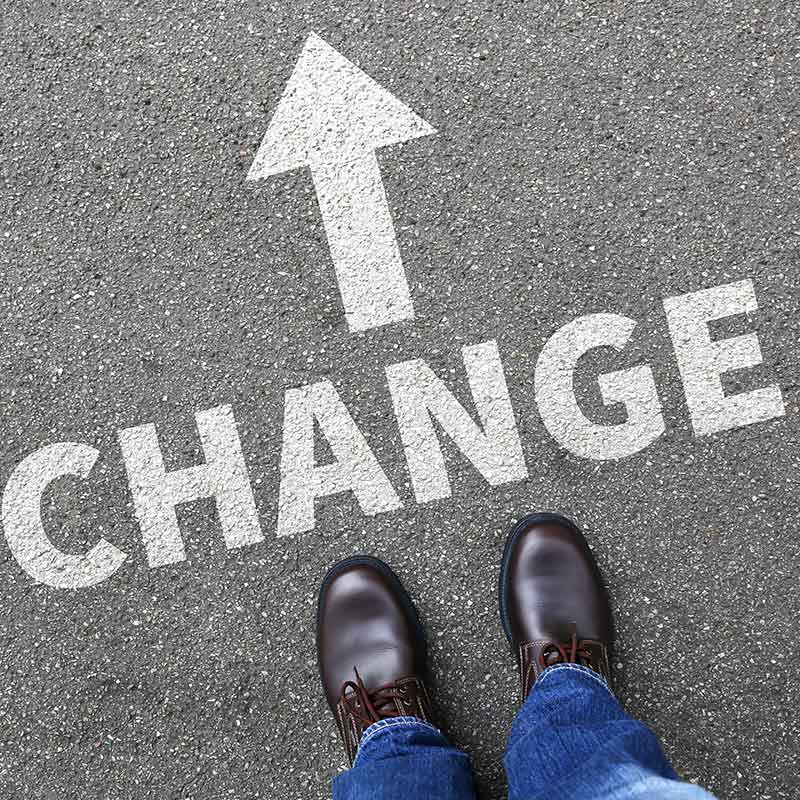Exploring Body Image Issues in Therapy

Introduction
Body image issues are increasingly common in today’s society, influenced by media, cultural norms, and societal pressures.
Addressing these challenges in therapy can provide individuals with the tools and support they need to build a healthier relationship with their body and self-image.
In this post, Exploring Body Image Issues in Therapy, we explore how therapy can play a vital role in understanding and improving body image.
Definition of Body Image and Its Components
Body image refers to an individual’s perceptions, thoughts, emotions, and behaviors related to their physical appearance.
It encompasses how a person sees themselves when they look in the mirror or visualize themselves in their mind, as well as how they feel and think about their body’s shape, size, and capabilities.
Exploring Body Image Issues in Therapy: Key Components of Body Image
Perception:
Perception refers to how you see and interpret your body’s appearance, including its size, shape, and features. This perception can be influenced by a variety of factors, such as personal experiences, cultural ideals, and societal messages about beauty and health. Importantly, your perception of your body may not always align with reality.
For instance, someone may perceive themselves as heavier or thinner than they actually are, or they may fixate on perceived imperfections that others might not notice.
This distortion can lead to challenges in accepting one’s body and may contribute to feelings of dissatisfaction or insecurity.
These perceptions are shaped not only by what you see in the mirror but also by how you imagine yourself in your mind.
Visual and mental imagery play a significant role in this component.
Visual imagery involves the way you look at your body physically, while mental imagery includes the internal picture you create of yourself, which may be influenced by memories, self-comparisons, or external feedback.
Both can have a profound impact on how you relate to your body and how you feel about yourself overall.
Understanding and addressing perception is a crucial part of improving body image.
Exploring body image issues in therapy can help uncover the roots of distorted perceptions and offer strategies to develop a more accurate and compassionate view of yourself.
Emotions:
Emotions play a significant role in how you relate to your body.
These feelings can range from positive emotions such as pride, satisfaction, and confidence to more challenging ones like shame, anxiety, frustration, or dissatisfaction.
Emotional responses to your body are often deeply personal, reflecting your unique experiences, self-perception, and the influence of external factors.
Personal experiences, such as compliments, criticisms, or traumatic events, can shape the way you feel about your body.
For example, a history of teasing or body shaming may lead to feelings of insecurity, while affirming experiences can foster self-appreciation and confidence.
These emotional reactions are also influenced by cultural norms and societal standards, which often set unrealistic expectations for appearance, weight, and beauty.
Exploring body image issues in therapy offers a safe space to identify and process these emotional reactions.
Therapy helps you understand how emotions about your body develop, why they persist, and how they affect your overall well-being.
By addressing these feelings, you can begin to cultivate a more compassionate and balanced emotional relationship with your body.
In therapy, you may learn strategies to manage difficult emotions, such as mindfulness techniques, emotional regulation tools, and practices that promote self-compassion.
These approaches not only help reduce negative feelings but also encourage positive emotional connections with your body, fostering long-term growth and healing.
Thoughts:
Thoughts are a powerful component of body image, encompassing the beliefs, attitudes, and internal dialogue you have about your body and appearance.
These thoughts can vary widely—some may be positive and affirming, others critical or negative, and some neutral. They often play a significant role in shaping how you perceive yourself and your sense of self-worth.
For many people, thoughts about their body are influenced by societal standards, cultural ideals, and personal experiences.
Messages from media, peers, and even family can contribute to unrealistic expectations and a tendency to focus on perceived flaws rather than strengths.
These internalized beliefs may lead to self-criticism, comparisons with others, or feelings of inadequacy.
Conversely, positive and empowering thoughts about your body can foster confidence, self-acceptance, and a more balanced perspective.
Neutral thoughts, which involve seeing your body as a functional and valuable part of your life rather than solely focusing on appearance, can also contribute to a healthier relationship with yourself.
Exploring body image issues in therapy provides an opportunity to examine these thought patterns and their origins.
Therapy can help you identify distorted or harmful beliefs, challenge them, and replace them with more realistic and compassionate perspectives.
For example, cognitive-behavioral techniques may be used to reframe negative thoughts, while mindfulness practices can encourage you to observe your thoughts without judgment.
By addressing your beliefs and attitudes about your body, therapy empowers you to develop a healthier mindset.
This shift not only impacts how you see yourself but also influences how you engage with the world, improving your overall quality of life and emotional well-being.
Behaviors:
Behaviors are the actions you take in response to your perceptions, emotions, and thoughts about your body.
These behaviors can be a reflection of how you view and feel about yourself, often influencing your overall well-being.
They may range from healthy, supportive actions to unhealthy or harmful ones, depending on the relationship you have with your body.
Healthy behaviors often include activities that promote physical, emotional, and mental well-being.
Examples include regular exercise, practicing self-care, nourishing your body with balanced meals, and engaging in hobbies or activities that bring you joy and fulfillment.
These actions are rooted in self-respect and a desire to care for your body as it is.
On the other hand, unhealthy behaviors can emerge when negative body image or dissatisfaction dominates.
These may include extreme dieting, compulsive over-exercising, or even avoiding social situations due to shame or discomfort about your appearance.
Such behaviors can have significant physical and emotional consequences, exacerbating feelings of isolation or low self-worth.
Exploring body image issues in therapy provides a safe and supportive environment to identify and understand the behaviors linked to your body image.
Therapy can help you uncover the triggers behind unhealthy patterns, develop strategies to replace them with more constructive habits, and foster a healthier, more balanced lifestyle.
Techniques like behavioral activation, mindfulness, and self-compassion exercises may be used to support this transformation.
By addressing these behaviors, therapy empowers you to make choices that align with your goals and values, creating a positive feedback loop that reinforces a healthier relationship with your body and yourself.

Exploring Body Image Issues in Therapy: Interconnected Nature
The components of body image—perception, emotions, thoughts, and behaviors—are deeply interconnected, constantly influencing and reinforcing one another in a dynamic way.
This interplay highlights the complexity of body image and underscores why addressing each component is crucial to fostering a healthier relationship with your body.
For example, a negative perception of one’s body shape or size can trigger feelings of shame or anxiety (emotions).
These emotions might lead to negative self-talk (thoughts), such as internalizing messages like “I’m not good enough” or “I’ll never look the way I want.”
In turn, these thoughts may manifest as behaviors like avoiding social interactions, engaging in extreme dieting, or withdrawing from physical activities, which can further deepen the negative perception.
On the other hand, positive perceptions of your body can create a ripple effect that fosters self-confidence and emotional well-being.
When you view your body with appreciation or neutrality, it can lead to empowering thoughts, such as “I am more than my appearance” or “My body is capable and strong.”
These thoughts encourage healthy behaviors like practicing self-care, participating in activities you enjoy, and engaging socially, which further reinforce a positive body image.
Exploring body image issues in therapy allows you to uncover these patterns and understand how each component interacts within your life.
Therapy provides a safe space to break negative cycles and establish positive ones.
By addressing perceptions, processing emotions, challenging harmful thoughts, and encouraging constructive behaviors, therapy can help you achieve a more balanced and compassionate view of yourself.
Recognizing the interconnected nature of body image is an essential step in fostering long-term growth and healing.
Each small shift in one area—whether it’s challenging a distorted perception or adopting a healthier behavior—can create a ripple effect that transforms the whole system, leading to greater self-acceptance and well-being.
Understanding body image involves recognizing how these components influence one another and contribute to overall mental and emotional health.
Addressing body image concerns in therapy often focuses on reshaping these perceptions, thoughts, and behaviors to foster a more balanced and accepting relationship with one’s body.

The Impact of Body Image Issues
Body image issues can profoundly affect every aspect of an individual’s life, extending far beyond physical appearance.
These challenges can have significant mental, emotional, physical, and social consequences, influencing how individuals see themselves and engage with the world around them.
Mental and Emotional Health: Negative body image is often linked to mental health concerns such as anxiety, depression, and low self-esteem.
Constantly battling self-critical thoughts or feeling dissatisfied with one’s appearance can lead to emotional distress, creating a cycle of negative thinking and hopelessness.
This emotional toll can make it challenging to focus on other aspects of life, such as work, relationships, or personal goals.
Physical Health: Body image issues can also drive unhealthy behaviors, such as extreme dieting, over-exercising, or disordered eating patterns.
These behaviors can lead to serious physical consequences, including malnutrition, fatigue, or even long-term health complications.
Also, avoiding physical activity altogether due to a sense of hopelessness regarding body dissatisfaction can negatively affect overall health and well-being.
Social Impacts: The effects of body image issues extend into social interactions and relationships.
Individuals struggling with body dissatisfaction may isolate themselves, avoiding social activities or withdrawing from meaningful connections out of fear of judgment or embarrassment.
Strained relationships can result from these behaviors, creating feelings of loneliness and reinforcing negative self-perceptions.
Everyday Functioning: Body image issues can interfere with daily life, making even routine activities feel daunting.
From avoiding mirrors and photographs to hesitating to participate in opportunities like swimming or attending events, these challenges can limit an individual’s ability to fully engage with life.
Exploring body image issues in therapy can help uncover the root causes of these impacts and provide strategies to mitigate their effects.
Therapy offers a supportive environment to challenge distorted beliefs, process difficult emotions, and build healthier behaviors and coping mechanisms.
By addressing the wide-reaching effects of body image issues, individuals can reclaim their confidence, strengthen relationships, and improve their overall quality of life.

Why Therapy Is Important for Addressing Body Image
Therapy plays a vital role in addressing body image issues by providing a safe, supportive, and nonjudgmental space where individuals can explore and process their concerns.
It allows for a deeper understanding of the underlying factors contributing to body image struggles, including personal experiences, societal pressures, and internalized beliefs.
Working with a therapist offers access to tools, strategies, and guidance tailored to your unique needs and goals.
Through the process of exploring body image issues in therapy, you can gain insights into how your thoughts, emotions, and behaviors interact to shape your self-perception.
This process helps foster self-acceptance, build resilience, and develop a healthier relationship with your body.
Therapy also empowers individuals to challenge harmful patterns and adopt new perspectives that promote growth and healing.
Techniques such as cognitive-behavioral therapy (CBT) can help reframe negative thought patterns, while mindfulness-based approaches encourage a compassionate and present-focused connection with oneself.
By uncovering the roots of body image struggles and addressing them directly, counseling provides clarity and solutions that support long-term change.
It’s not just about improving how you view your body—it’s about transforming the way you think, feel, and act to enhance your overall quality of life and well-being.

Therapeutic Approaches to Exploring Body Image Issues in Therapy
Addressing body image issues often requires a multifaceted therapeutic approach, as these challenges can stem from a combination of personal, cultural, and societal factors.
Exploring body image issues in therapy involves using tailored methods to meet individual needs and goals. Here are some of the most effective approaches:
- Cognitive-Behavioral Therapy (CBT): This evidence-based approach helps identify and challenge negative thought patterns that contribute to body dissatisfaction. By replacing harmful beliefs with more balanced and constructive thoughts, CBT empowers individuals to develop a healthier mindset and improved self-esteem.
- Mindfulness and Acceptance-Based Approaches: These techniques encourage individuals to cultivate self-compassion and present-moment awareness. By focusing on acceptance rather than judgment, clients learn to appreciate their bodies for their functionality and resilience, reducing the emphasis on appearance.
- Trauma-Informed Therapy: Past experiences, such as bullying or body shaming, can significantly influence body image. Trauma-informed therapy provides a safe space to process these experiences and their lasting effects, helping clients reframe their narratives and heal from emotional wounds.
- Creative and Experiential Techniques: Non-verbal approaches, such as art therapy, movement therapy, or journaling, allow clients to explore body image issues in innovative ways. These techniques can bypass verbal barriers and help individuals connect with their emotions and experiences on a deeper level.
- Psychoeducation: Knowledge is a powerful tool in fostering change. Psychoeducation provides clients with information about body diversity, media literacy, and the health at every size (HAES) movement, empowering them to challenge societal standards and embrace a more inclusive view of beauty and health.
These therapeutic approaches work together to create a comprehensive framework for addressing body image concerns.
By combining evidence-based techniques with compassion and personalization, therapy supports clients in building a more positive, accepting, and empowering relationship with their bodies.

Common Goals in Exploring Body Image Issues in Therapy
Therapy for body image issues is a transformative process that empowers individuals to build a healthier relationship with their body and themselves.
While every person’s journey is unique, there are common goals that many clients work toward in therapy.
These objectives help address the underlying factors contributing to body image concerns and promote long-term growth and healing.
One key goal is fostering self-awareness.
Exploring body image issues in therapy allows clients to better understand how their perceptions, thoughts, emotions, and behaviors are interconnected.
This self-awareness provides clarity on the root causes of their struggles, enabling them to identify patterns and triggers that impact their body image.
Developing healthier coping strategies is another crucial focus.
Therapy equips clients with tools to manage difficult emotions, such as shame or anxiety, and replace harmful behaviors—like extreme dieting or self-criticism—with constructive actions.
These strategies help build resilience and create a foundation for sustainable change.
Building a more positive or neutral relationship with the body is often a primary therapeutic goal.
For some, this means learning to appreciate their body for its functionality and strengths, while for others, it involves shifting from a critical mindset to one of acceptance or neutrality.
Therapy provides a safe space to reframe negative beliefs and foster a more compassionate view of oneself.
Addressing societal and cultural pressures is also essential when exploring body image issues in therapy.
Clients are encouraged to critically examine how external standards of beauty and appearance influence their self-worth.
By challenging these unrealistic norms, therapy helps individuals reclaim their sense of self beyond external validation, embracing their unique identity and values.
These goals work together to empower individuals to break free from the constraints of negative body image and cultivate a healthier, more fulfilling life.
Therapy offers not just solutions but also the support and guidance needed to navigate this journey with confidence and hope.

Success Stories: Real-Life Transformations
Therapy has been a source of empowerment and healing for countless individuals facing body image issues.
In a supportive and compassionate environment, clients have been able to confront and overcome the challenges that once felt insurmountable.
These success stories highlight the transformative power of exploring body image issues in therapy and the meaningful changes it can bring.
For some, the journey begins with acknowledging the negative perceptions and emotions tied to their body image.
Through guided exploration and professional support, they’ve gained clarity about the origins of these feelings—whether rooted in personal experiences, societal pressures, or past trauma.
This self-awareness has been the first step toward rebuilding their confidence and self-esteem.
Many individuals have also discovered healthier ways to cope with emotions and challenges by exploring body image issues in therapy.
By replacing harmful behaviors like extreme dieting or avoidance with constructive habits such as mindful eating, self-care practices, and physical activities they genuinely enjoy, clients have experienced not only emotional relief but also physical and mental well-being.
One common thread in these success stories is the reclamation of self-worth.
Therapy has helped clients redefine their value beyond appearance, focusing instead on their unique strengths, capabilities, and personal growth.
By addressing societal and cultural expectations, they’ve been able to embrace a more authentic and fulfilling sense of self.
These real-life transformations illustrate how therapy can help individuals rewrite their narrative, moving from a place of struggle to one of empowerment.
While each journey is unique, the consistent outcome is a renewed sense of hope, resilience, and a healthier relationship with the body and self.
By exploring body image issues in therapy, individuals are not just working toward change—they are reclaiming their lives and discovering the confidence to thrive in ways they may have once thought impossible.

Tips for Choosing the Right Therapist
Choosing the right person to work with is a critical step when exploring body image issues in therapy.
A skilled and experienced therapist can provide the understanding, tools, and support you need to navigate this journey.
Since body image concerns are often complex and deeply personal, it’s essential to find someone who specializes in this area and aligns with your unique needs.
Start by seeking a therapist with specific experience in exploring body image issues in therapy.
They should be familiar with the multifaceted nature of these concerns, including the interplay of emotions, thoughts, behaviors, and societal influences.
A therapist who understands these complexities can offer a comprehensive and tailored approach to support your healing.
It’s also important to look for someone who uses evidence-based techniques, such as cognitive-behavioral therapy (CBT), mindfulness, or trauma-informed practices.
These approaches have been proven effective in helping individuals reframe negative beliefs, manage emotions, and build healthier habits.
During your search, don’t hesitate to ask potential therapists about the methods they use and how these align with your goals.
An initial consultation is a valuable opportunity to assess compatibility.
Use this time to ask questions about their approach, experience, and philosophy.
For instance, you might ask how they’ve supported clients with similar concerns, or how they tailor their methods to individual needs.
Pay attention to how comfortable and understood you feel during this conversation, as a strong therapeutic relationship is key to success.
Additionally, consider logistical factors such as the therapist’s availability, location, and whether they offer virtual sessions if needed.
Practical compatibility can make a significant difference in ensuring you can commit to the process consistently.
Ultimately, finding the right therapist involves balancing expertise with personal connection.
When you feel supported and understood by a professional who is well-equipped to guide you, the path to overcoming body image challenges becomes much more achievable.
Take your time to explore your options and trust your instincts as you make this important decision.

Practical Steps You Can Take Outside of Therapy
While therapy provides valuable support and guidance in addressing body image issues, there are many practical steps you can take outside of sessions to complement your progress.
These actions can help you reinforce positive changes, cultivate self-acceptance, and maintain a healthier relationship with your body.
- Engage in self-compassion exercises and mindfulness practices:
Developing self-compassion can transform how you view yourself and your body.Try exercises like writing affirmations, journaling about your strengths, or practicing self-kindness when you notice critical thoughts.
Mindfulness techniques, such as deep breathing or body scans, can help you connect with your body in a nonjudgmental way and stay present in the moment.
- Limit exposure to harmful media and embrace body-positive resources:
Social media and traditional media often promote unrealistic beauty standards, which can negatively affect your body image.Take proactive steps to curate your media consumption by unfollowing accounts or avoiding content that makes you feel inadequate.
Instead, seek out body-positive influencers, books, and communities that celebrate diversity and promote self-love.
- Build a supportive community or seek out online support groups:
Surrounding yourself with people who uplift and accept you can make a significant difference in your journey.Whether it’s friends, family, or a dedicated support group, having a network that encourages self-acceptance and body positivity can reinforce your progress.
Online forums or social media groups focused on exploring body image issues in therapy can also provide valuable encouragement and insights.
These practical steps are tools you can incorporate into your daily life to complement the work you do in therapy.
By taking small but intentional actions, you can create an environment that supports your healing and fosters a healthier, more positive relationship with your body.

Why Exploring Body Image Issues in Therapy Is a Powerful Investment
Taking the step to address body image concerns in therapy is an investment in your mental, emotional, and physical well-being.
Body image issues often extend far beyond appearance, influencing your self-esteem, relationships, and ability to engage fully in life.
By exploring body image issues in therapy, you create an opportunity for profound and lasting change.
One of the most significant benefits of therapy is the impact it can have on your mental health.
Negative body image is often linked to anxiety, depression, and low self-worth.
Therapy provides a safe and supportive space to process these feelings, challenge harmful thought patterns, and replace them with constructive, empowering beliefs.
This shift can improve your overall mental clarity and emotional balance, making everyday challenges more manageable.
Therapy also plays a crucial role in strengthening relationships.
When body image issues are addressed, individuals often find it easier to connect authentically with others.
By building self-acceptance and confidence, you can approach relationships with a sense of security and openness, fostering deeper connections with loved ones and creating healthier dynamics.
Another vital outcome of therapy is its ability to enhance your overall quality of life.
Exploring body image issues in therapy often leads to a newfound sense of resilience and self-compassion.
You learn to embrace your body for its functionality and strengths, shifting your focus from meeting societal standards to honoring your unique value.
This perspective allows you to pursue goals, hobbies, and experiences with a renewed sense of purpose and joy.
Investing in therapy for body image issues is ultimately an investment in yourself.
It’s a commitment to growth, healing, and living a more fulfilling life.
By taking this journey, you empower yourself to break free from the constraints of negative self-perceptions and discover the confidence to thrive in all aspects of life.

Conclusion
Exploring body image issues in therapy is not just a step toward addressing personal challenges—it’s a transformative journey that fosters hope, healing, and growth.
Therapy provides a safe and supportive environment to uncover the underlying causes of body image concerns, empowering you to make meaningful and lasting changes in your life.
Working with a skilled therapist allows you to gain valuable insights into your thoughts, emotions, and behaviors, and how they interact to shape your self-perception.
Through this process, you can challenge harmful patterns, develop healthier coping strategies, and cultivate self-acceptance.
Therapy also equips you with tools to navigate societal pressures and redefine your sense of self beyond external standards.
Committing to self-discovery in therapy opens the door to a healthier relationship with your body and yourself.
It’s a journey of reclaiming your worth, building resilience, and embracing your unique strengths and qualities.
While the path may not always be easy, the rewards of increased confidence, improved mental well-being, and a more fulfilling life make it a powerful investment in your future.
Take the first step today toward a more positive and empowered future.
Whether you’re just beginning to explore body image issues or seeking to deepen your journey, therapy can provide the guidance and support you need to thrive.
Your transformation begins with the decision to prioritize yourself and your well-being.

